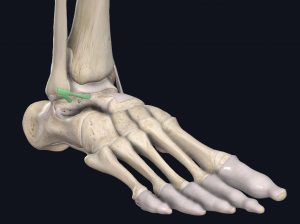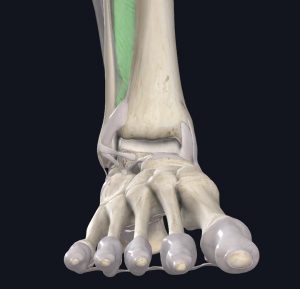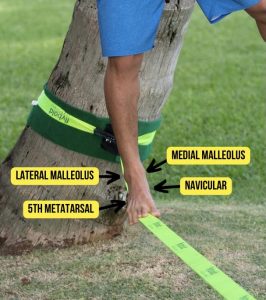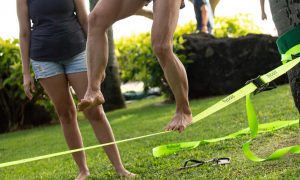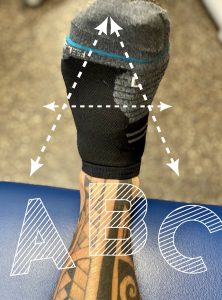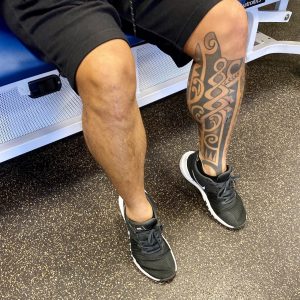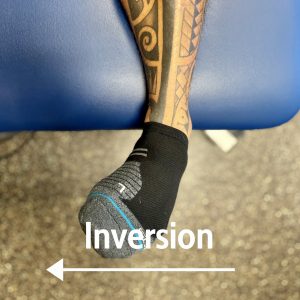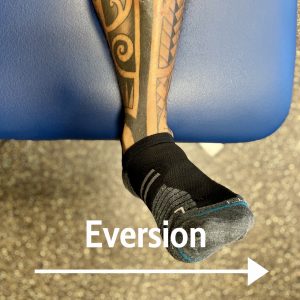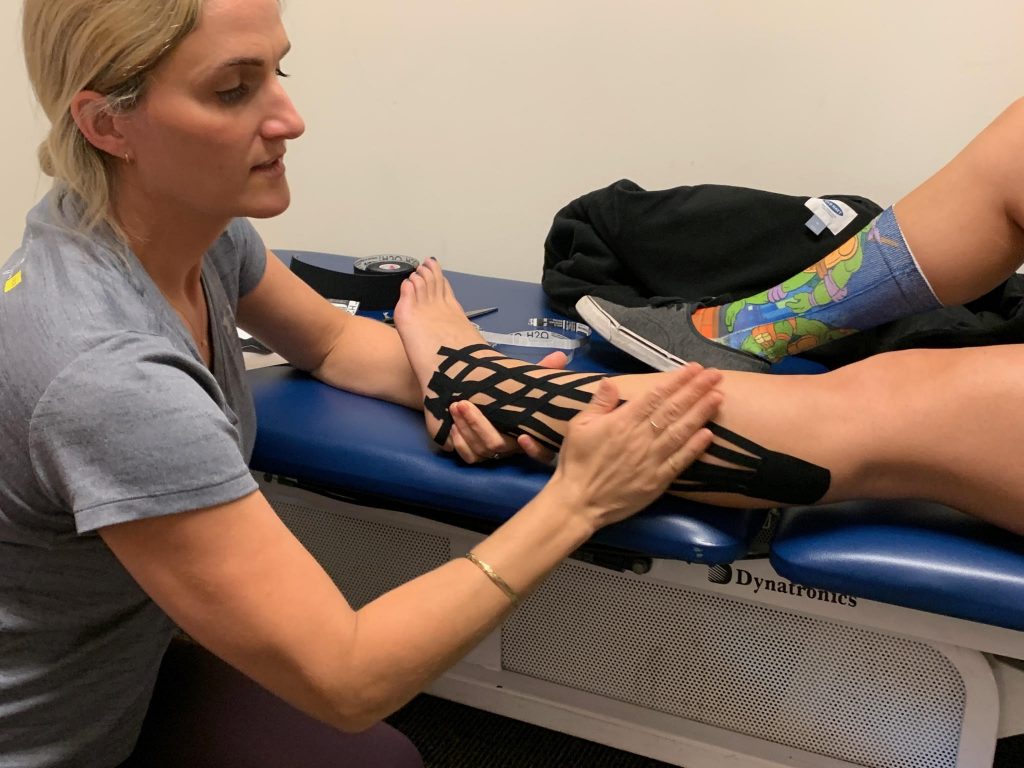
If there was a record for how many times we’ve seen patients with an ankle sprain come through the clinic… I think we might have broken it. Pun intended.
Terrible jokes aside, sprained ankles are a common injury, especially if you’re in sports or enjoy hiking here in Hawaii. They occur nearly 28,000 times every day in the United States alone. (1)
If you’re one of the many who have experienced this injury, let us make your life way easier! Read on to learn about the healing process and find ways to prevent it from happening again.
What is an Ankle Sprain?
Simply put, an ankle sprain occurs when there is damage to the ligaments that stabilize the ankle joint.
This injury can vary a lot. Some people are injured for a few hours and walk it off – others are limping for weeks. Most sprains are mild, but they can also be severe and drastically impact the way you walk, run, jump, and balance.
The Infamous Lateral Ankle Sprain
The lateral ligaments, on the outside of the ankle, are the most commonly injured and are usually damaged when we “roll” the ankle.
This lateral ligament complex is made up of three ligaments:
- the anterior talofibular ligament (ATFL)
- the calcaneofibular ligament
- the posterior talofibular ligament
An injury to one of these lateral ligaments generally occurs when the ankle is plantarflexed (toes pointed down) and inverted (toes pointed in).
- The commonly sprained ATFL (highlighted)
Image courtesy of Complete Anatomy
Medial Ankle Sprains and High Ankle Sprains
Medial and high ankle sprains are not as common, but they’re seen often in sports and high levels of activity. Treatment is similar, but because of location, some of the rehabilitation process requires a different approach.
Medial ankle sprains occur on the inside of the ankle. This is a group of four ligaments collectively called the deltoid ligament. Injury to this medial structure occurs when our ankle rolls outward and stretches the deltoid ligament.
High ankle sprains often occur when the foot is planted to the ground and is forced up and out. This disturbs the ligaments that stabilize the tibia and fibula, sometimes as high as the ligament complex that connects the two bones. High ankle sprains typically have a longer recovery time than medial or lateral sprains, depending on the severity.
- A high ankle sprain can reach the syndesmosis between the two bones above the ankle (highlighted)
Image courtesy of Complete Anatomy
The various locations and severity, or grades, of ankle sprains can impact recovery and rehabilitation so make sure to contact your local physical therapist to be evaluated!
Can You Tell If It’s an Ankle Sprain vs. Broken Ankle?
Ankle sprains are damage to ligaments, or soft tissue structures that keep bones stable next to each other. A broken/fractured ankle involves damage to a bone.
A fresh ankle injury could have symptoms that align with either a sprain or fracture. They both present with pain, swelling, and difficulty walking.
So how do you know what to do next?
Only about 15% of ankle or foot injuries end up being fractures, but x-rays are very commonly ordered after ankle injuries to rule it out. Physical therapists, physicians, athletic trainers, and other healthcare providers use the Ottawa Ankle Rules to help determine if imaging is needed to help diagnose a sprain compared to a fracture. (2)
According to Ottawa Ankle Rules, x-rays are likely indicated if:
- It is painful to touch the inside or outside ankle bones (malleoli) and/or 6 cm above these areas
- You are unable to walk 4 steps or bear weight immediately after the injury
- It is painful to touch the base of the fifth metatarsal
- It is painful to touch the navicular bone
- Ottowa Ankle Rule Landmarks
If you’re suspecting a fracture, see your primary care physician or ask your physical therapist to check.
Do I Need an X-Ray or MRI of My Ankle Sprain?
As we mentioned above, x-rays after ankle sprains are very common and are used to identify if there are any fractures to the foot or ankle bones.
Since ankle sprains involve injury to ligaments, or soft tissue structures, sometimes an MRI is ordered to visualize the injury. Magnetic Resonance Imaging, or MRI, is a medical imaging technique that uses a magnetic field and computer-generated radio waves to create detailed images of the organs and tissues in your body.
Remember imaging of ankle sprains is not always required, especially in low grade ankle sprains. These imaging results do not change the course of rehabilitation in acute ankle sprains. Your physician along with your healthcare team may recommend imaging for prolonged symptoms like pain and swelling that have not improved despite rehabilitation efforts.
How to Manage My Sprained Ankle
A common way to manage a recently sprained ankle is to apply the principles of Rest, Ice, Compression, and Elevation (RICE). However, there is a more modern definition of the term ‘rest’ in this mnemonic!
- Resting the joint does not mean not moving the joint at all! It means minimizing painful activities or motions but continuing to move the foot and ankle in pain free motions. Light use of the ankle can be helpful to reduce swelling, minimize stiffness, and keep surrounding muscles strong.
- Icing around the area of injury can also help reduce inflammation, pain, and swelling.
- Compression can be achieved by wrapping the ankle with an elastic bandage, taping by a healthcare provider, or wearing a compression sleeve. This can help manage swelling around the joint and improve recovery time.
- Elevating the acutely sprained ankle utilizes gravity to help aid in swelling reduction and limit stiffness as well.
How Do I Sleep With a Sprained Ankle?
After an ankle sprain, sleeping may be difficult due to pain and swelling or sensitive positioning of the ankle.
Sleep can be a very important component in the healing process – it is a time that allows our body to focus on recovery.
If you have a lot of swelling, you can wrap your ankle as shown above, but take care that the wrapping is not too tight and or uncomfortable. Another way to manage swelling overnight is to elevate the ankle by placing a couple pillows under your legs or elevating the foot of your bed slightly to help with fluid drainage. Depending on the type of ankle sprain, certain positions may be uncomfortable for the ankle, so finding a position that does not cause discomfort is important.
Ankle Sprain Rehab
There are a variety of factors that are addressed during rehabilitation of an ankle sprain. Your physical therapist will evaluate your ankle to look for range of motion, strength, joint mobility, and balance changes from your injury.
Depending on the injury location and severity, your physical therapist will address your deficits accordingly. The goal is to get your ankle function back to normal as soon as possible without pain.
Usually your physical therapist will look to restore normal joint motion before progressing to strengthening and balance exercises. Once the injury has healed and strength and range of motion have been restored, you will begin sport or activity-specific exercises to help you return to doing the things you love!
- Like this!
The Best Exercises for a Sprained Ankle
Don’t wait – you should see your local physical therapist to be evaluated and determine the best plan of care needed for your injury. Until then, here are some common early exercises to help manage common symptoms after an ankle sprain. Start warding away the stiffness, pain, and weakness!
- Ankle alphabet: With your foot elevated, pretend your big toe is a pencil and draw out the alphabet in the air. This will help your ankle muscles stay active and help move out swelling from the joint if present.
- Ankle Alphabet
- Seated calf raises: While sitting with your feet on the floor, raise our heels up like you are going onto your tiptoes. This will activate your calf muscles along with helping improve swelling.
- Seated Calf Raises
- Inversion and Eversion: While seated with your leg resting straight out in front of you, point your toes in and out to help activate the muscles on the inside and outside of your ankle. Do not push past pain.
Remember, these should be pain-free. Do what you can, and if you have questions, contact us to book an appointment!
Written by Patrick Morton, DPT.
Sources
1. Kaminski TW, Hertel J, Amendola N, Docherty CL, Dolan MG, Hopkins JT, Nussbaum E, Poppy W, Richie D; National Athletic Trainers’ Association. National Athletic Trainers’ Association position statement: conservative management and prevention of ankle sprains in athletes. J Athl Train. 2013 Jul-Aug;48(4):528-45. doi: 10.4085/1062-6050-48.4.02. PMID: 23855363; PMCID: PMC3718356. https://pubmed.ncbi.nlm.nih.gov/23855363/
2. Stiell I. Ottawa ankle rules. Can Fam Physician. 1996 Mar;42:478-80. PMID: 8616287; PMCID: PMC2146318. https://pubmed.ncbi.nlm.nih.gov/8616287/
